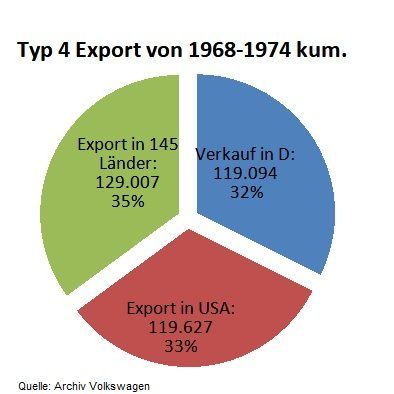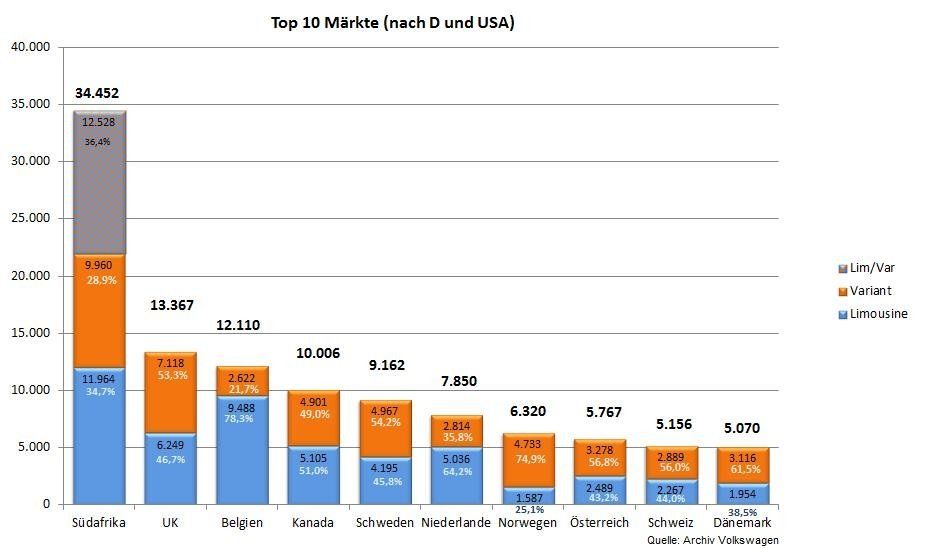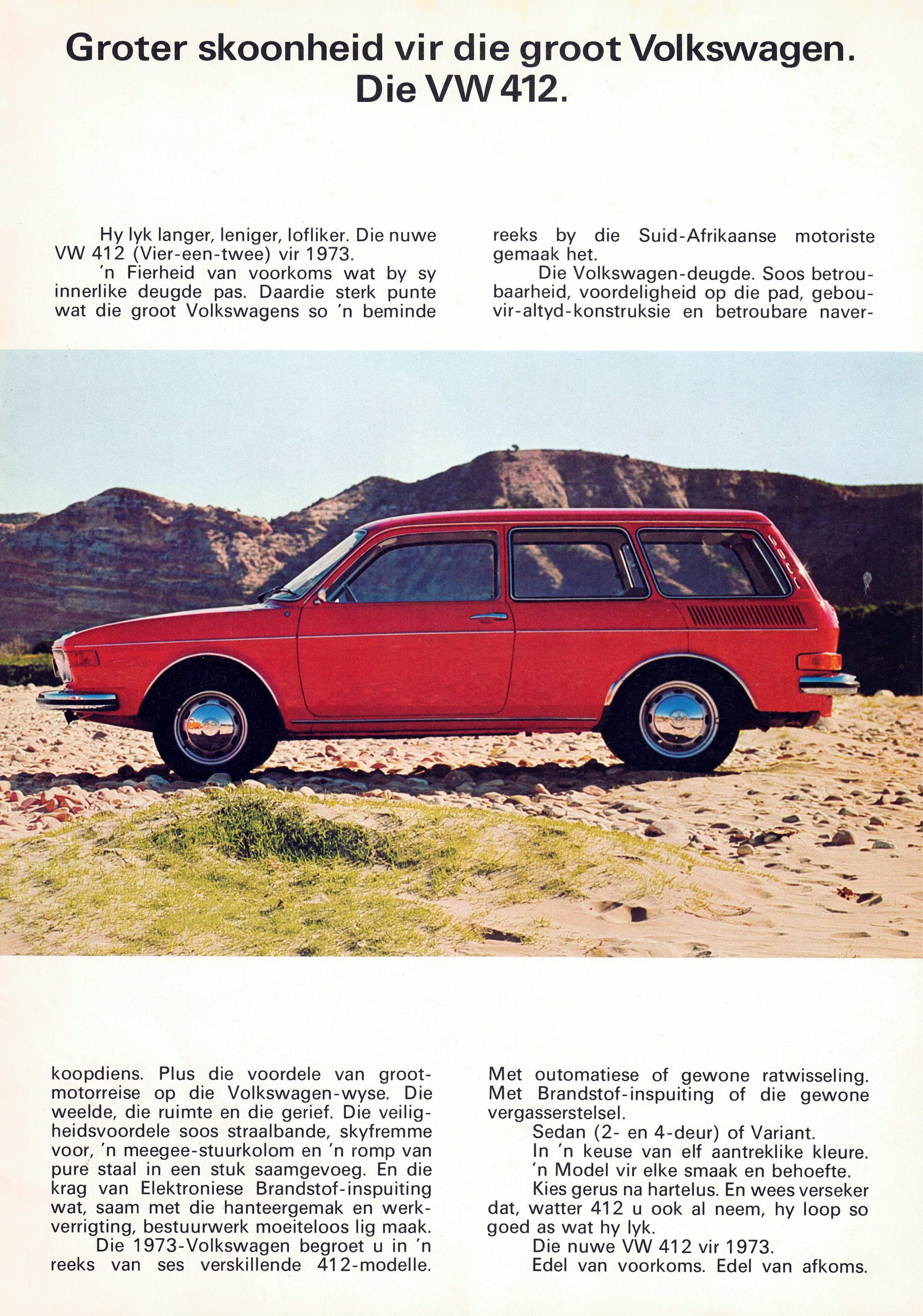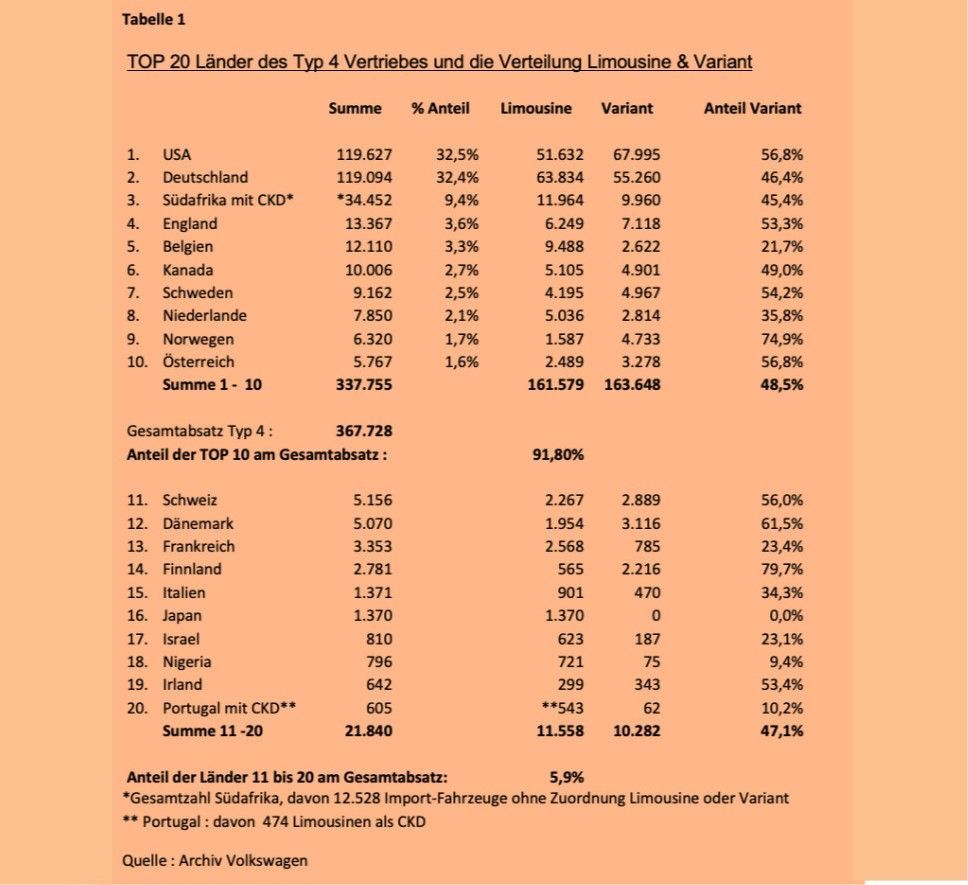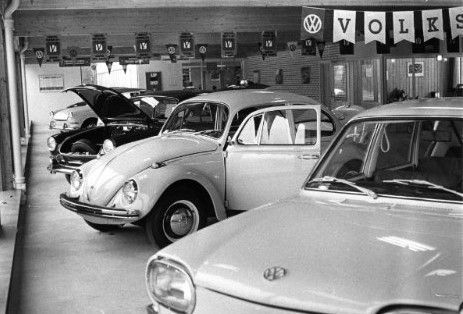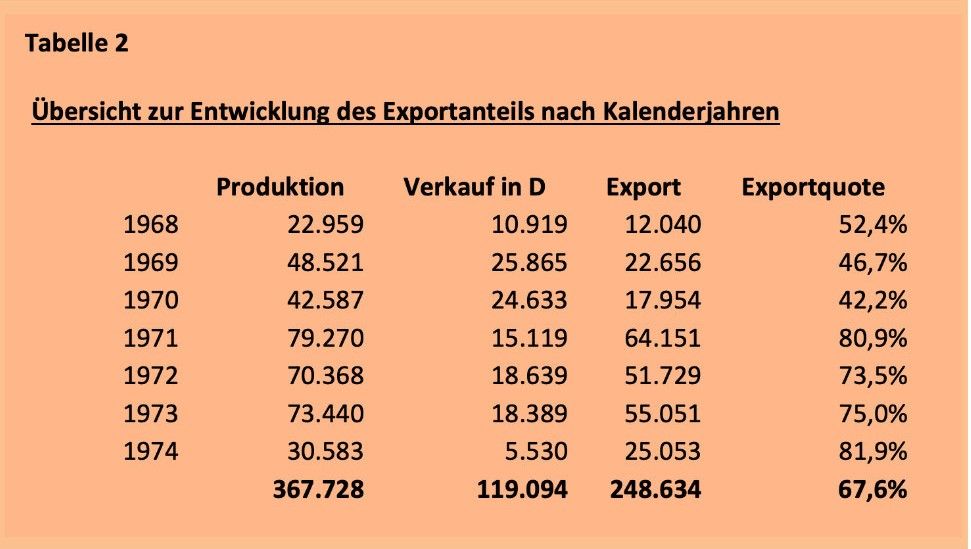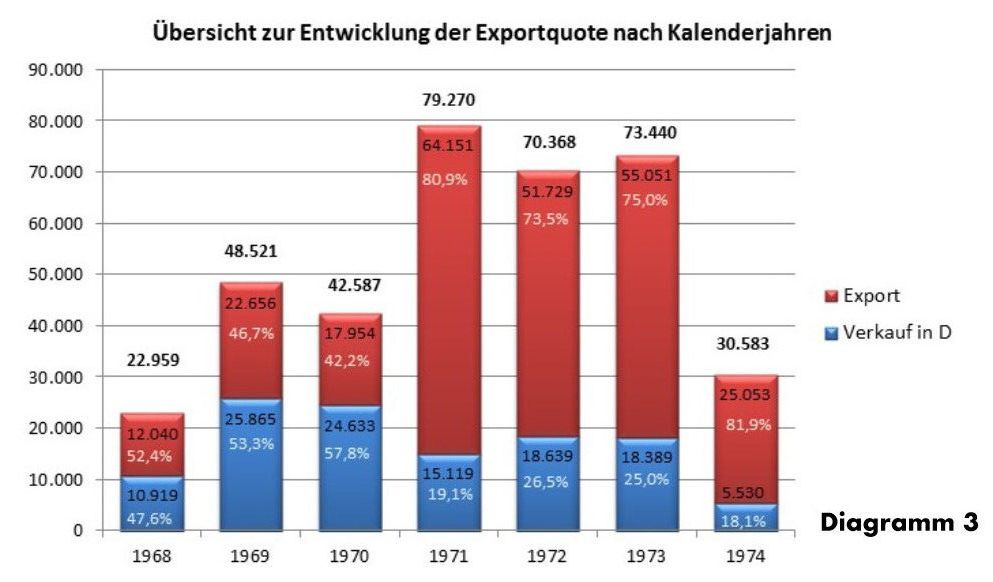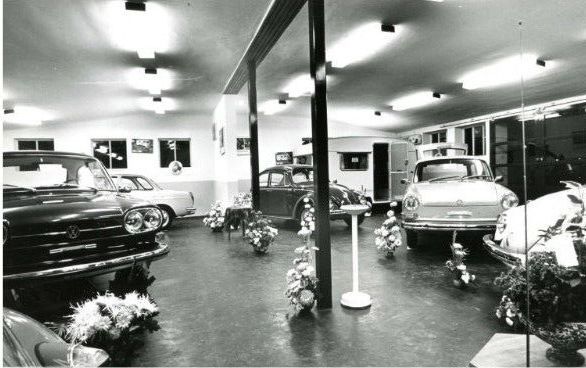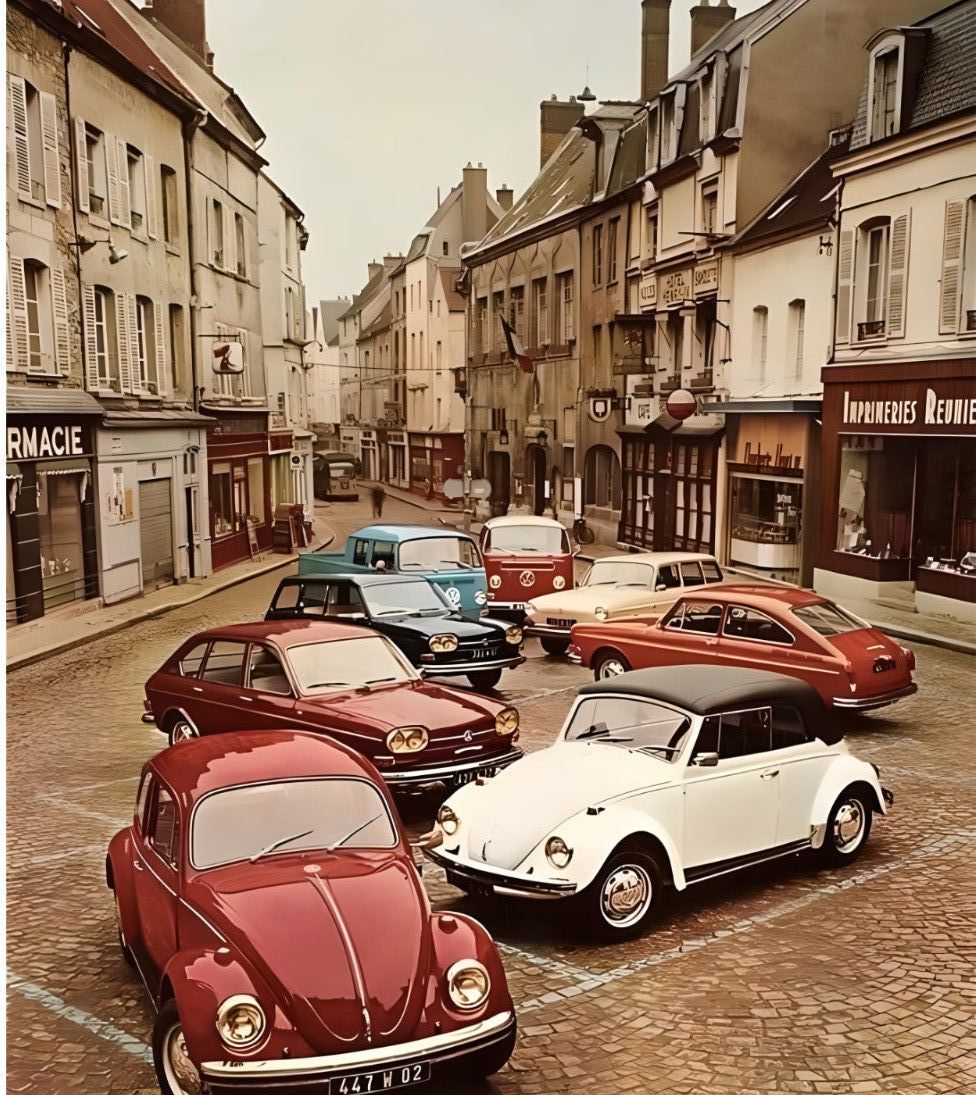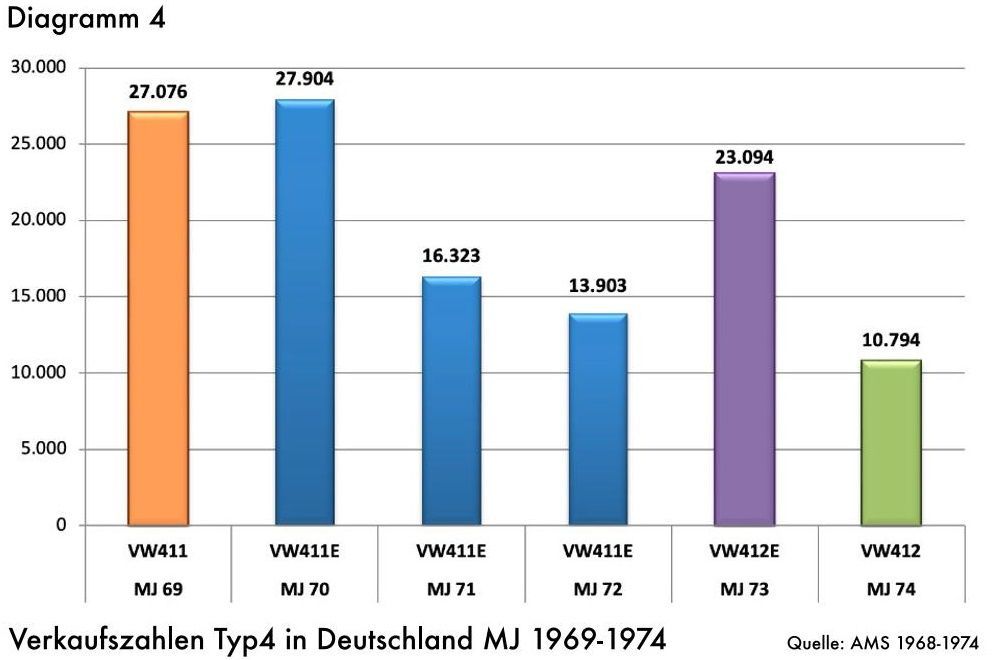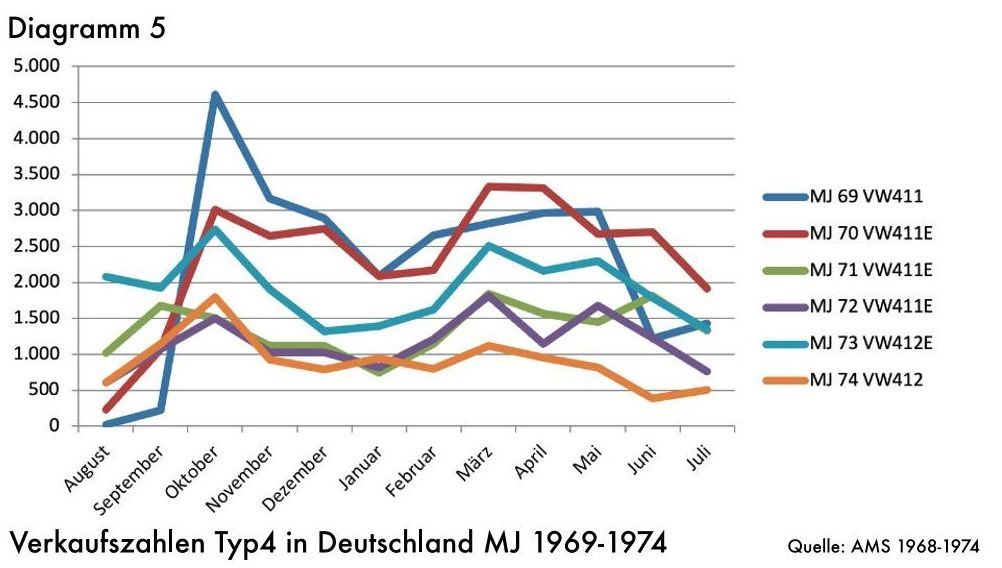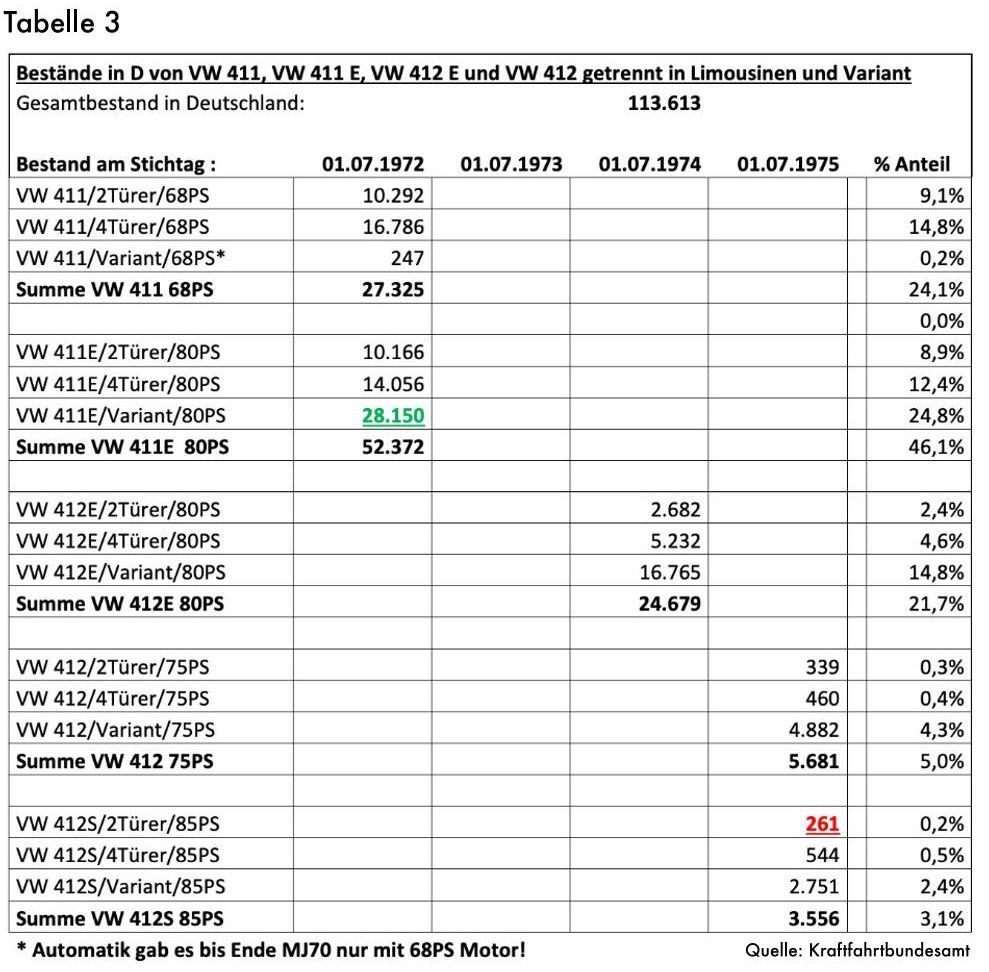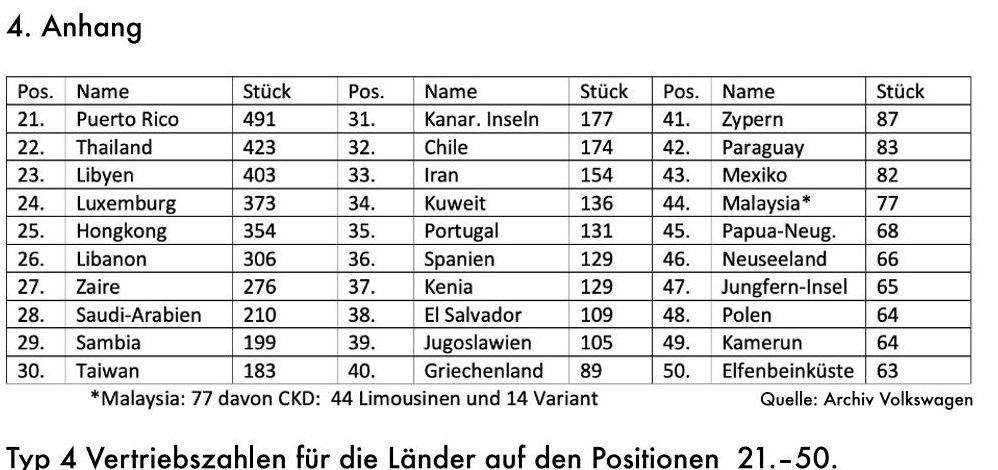1. Introduction
This analysis is based on the fully evaluated "market reports" from the magazine Auto Motor und Sport (AMS) from 1968 to 1974. From them I was able to get the monthly German sales figures (the registration figures for the VW Type4 were actually shown separately at the time!) to the piece.
Furthermore, I received from the archives in Wolfsburg the list of all countries to which Type 4 were exported and the quantity sold there, broken down into sedans (2 and 4-door without distinction) and Variant models.
In addition to this information, I received the German registration statuses from Flensburg on 07/01/72, 07/01/73, 07/01/74 and 07/01/75, broken down by the various Type 4 vehicle types and engines, from the Federal Motor Transport Authority in Flensburg. Unfortunately, the figures from July 1, 1969, July 1, 1970 and July 1, 1971, which are also of interest to us, are no longer available in Flensburg.
The production figures (by calendar year) come from the VW Museum in Wolfsburg, which are printed on the wall there.
All other information regarding the years is given in VW model years (MY is from August 1st to July 31st) if calendar years are not expressly mentioned.
Since it was very difficult to find out all the information on this subject, I am grateful for every comment and correction, preferably by email to shwalde@live.de





